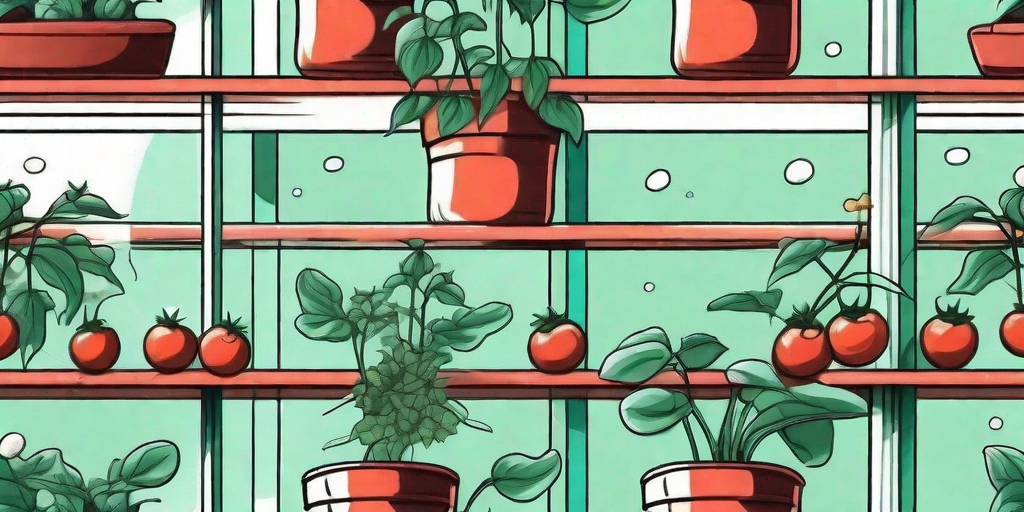
Welcome, green-thumbed friends and indoor gardening enthusiasts! If you've ever found yourself pining for the taste of fresh, homegrown tomatoes in the dead of winter, you're in the right place. We're about to embark on a journey that will turn your kitchen into a year-round tomato haven. So, grab your gardening gloves, and let's get started.
Understanding the Tomato Plant
The Tomato's Natural Habitat
First things first, let's get to know our subject a little better. The tomato plant, or Solanum lycopersicum if you want to get fancy, is a warm-weather loving plant. It thrives in full sun, with temperatures between 65 and 85 degrees Fahrenheit. But don't let that discourage you, winter warriors. With a little ingenuity and a dash of determination, we can recreate these conditions indoors.
Tomatoes are also heavy feeders, meaning they require a lot of nutrients to produce those juicy fruits we all love. This is where a good quality potting mix and regular fertilizing come into play. But more on that later.
Tomato Varieties
There are literally thousands of tomato varieties out there, from the humble cherry tomato to the mighty beefsteak. For indoor gardening, smaller varieties tend to work best. They require less space and mature faster than their larger counterparts. Some great choices for indoor growing include 'Tiny Tim', 'Red Robin', and 'Yellow Pear'.
However, if you're feeling adventurous or have a particularly large indoor space, don't let us stop you from trying a larger variety. Just remember, the bigger the plant, the bigger the pot and the more light it will need.
Creating the Perfect Indoor Environment
Lighting
As we mentioned earlier, tomatoes love the sun. In fact, they need at least 6-8 hours of sunlight per day to produce fruit. In winter, this can be a challenge. Enter, grow lights. These handy devices can provide your plants with the light they need, even on the gloomiest winter day.
When choosing a grow light, look for one that offers a full spectrum of light. This mimics natural sunlight and encourages healthy growth. LED lights are a great choice as they are energy efficient and produce less heat than other types of grow lights.
Temperature and Humidity
Remember those ideal temperatures we talked about? It's time to recreate them. Most homes are heated to around 70 degrees in winter, which is perfect for tomato plants. Just make sure to keep your plants away from drafts or heat vents, which can cause temperature fluctuations.
Humidity is another important factor. Tomatoes like a humidity level of around 40-70%. In winter, indoor air can become dry, so you may need to use a humidifier or place a tray of water near your plants to increase humidity levels.
Planting and Caring for Your Indoor Tomatoes
Planting
Start by choosing a pot that is at least 12 inches deep and has good drainage. Fill the pot with a high-quality potting mix and plant your seeds or seedlings according to the packet instructions. Place the pot in a sunny location or under your grow light.
Water the plant thoroughly and then let the top inch of soil dry out before watering again. Overwatering can lead to root rot, which is a surefire way to kill your plant.
Fertilizing
As we mentioned earlier, tomatoes are heavy feeders. This means they need a lot of nutrients to produce fruit. A good quality tomato fertilizer should contain nitrogen, phosphorus, and potassium, as well as trace elements like calcium and magnesium.
Follow the instructions on the fertilizer packet for how much and how often to feed your plants. Remember, it's better to under-fertilize than over-fertilize. Too much fertilizer can burn your plants and cause more harm than good.
Harvesting Your Tomatoes
After all that hard work, it's finally time to reap the rewards. Tomatoes are ready to harvest when they are fully colored and slightly soft to the touch. Simply twist the fruit gently to remove it from the plant.
Remember, tomatoes continue to ripen after they've been picked, so don't worry if they're not perfectly ripe when you harvest them. Just place them in a sunny window and they'll ripen up in no time.
Frequently Asked Questions
- Can I really grow tomatoes indoors in winter?
Yes, you absolutely can! With the right care and conditions, you can enjoy fresh, homegrown tomatoes all year round.
- What kind of tomatoes can I grow indoors?
Smaller varieties like 'Tiny Tim', 'Red Robin', and 'Yellow Pear' are great choices for indoor gardening. However, if you have the space and light, you can try larger varieties as well.
- How long does it take for tomatoes to grow indoors?
Most tomato plants will start producing fruit 60-80 days after planting. However, this can vary depending on the variety and growing conditions.
So there you have it, folks. With a little bit of knowledge and a whole lot of love, you can enjoy the taste of fresh, homegrown tomatoes all year round. Happy gardening!











